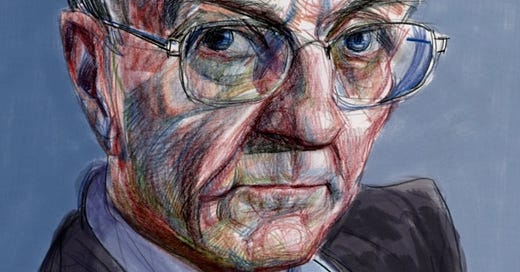Seymour sees less
How Hersh’s ‘Crystal Ball’ Lost Its Clarity and turned him into an alarmist on Iran
Seymour Hersh rose to prominence as a fearless investigative journalist—from exposing My Lai in 1969 to Abu Ghraib in 2004—but in recent years, his repeated predictions about U.S. military action toward Iran have repeatedly missed the mark, turning him into what some consider an alarmist anachronism. In addition to the Pulitzer Prize, Hersh has received numerous accolades, including the National Magazine Award for Public Interest and five George Polk Awards, which recognize outstanding investigative and enterprise journalism.
Missed Predictions
“The Iran Plans” (April 2006): Hersh warned of accelerating U.S. military planning—complete with bunker-busters and covert reconnaissance—suggesting an imminent bombing campaign against Iran grounded in “simulated nuclear bombing runs” and clandestine infiltration of Iranian facilities.
Follow‑up pieces in 2006–2008: He continued to predict both covert and overt strikes—targeted “surgical” attacks on Quds Force sites, proxy support for insurgents, and secret funding of opposition groups.
Reality check: As of mid‑2025, none of Hersh’s dire warnings materialized. Iran was not bombed by the U.S., Western-funded insurgents didn’t overthrow the regime, and covert missions remained precisely that—never turning into overt conflict. In retrospect, Hersh seems to have repeatedly sounded alarms over plans that never came to fruition.
Alarmism & Outmoded Worldviews
Hersh’s stance represents a steadfast holdover from the “realpolitik” era: viewing global threats through a lens of American military dominance and regime change. His narrative suggests hostile, expansionist Shia Islamism and portrays Iran as an eternal threat in need of strategic containment.
But Hersh has consistently misread the Khomeinist regime, downplaying its aggression and selling the illusion that diplomacy alone could tame Tehran’s ambitions. He’s clung to the outdated notion that the Islamic regime in Iran is a rational actor, ignoring its decades-long record of exporting terror, destabilizing the region, and weaponizing sectarianism.
While U.S. administrations—both Republican and Democratic—have at times pursued sanctions and containment, Hersh has dismissed these efforts as warmongering, all while giving undue credibility to the regime’s hollow diplomatic posturing. His analysis fails to grasp that Tehran’s overtures are often a smokescreen for continued nuclear escalation and regional adventurism.
Meanwhile, the global balance of power has shifted. China, Russia, and regional players like Turkey and the Gulf states have become decisive actors, but Hersh remains stuck in a Cold War framework, blind to the ideological fervor and asymmetric warfare that define the Khomeinist regime’s playbook today.
Hersh’s warnings often rely heavily on anonymous sources—a fact that once helped build trust but now sometimes casts doubt on their validity. After decades of highlighting covert programs that never culminated in action, his credibility on future predictions has eroded.
Why His Perspective Has Become a Punchline
Pattern of false alarms: Repeated predictions of U.S.–Iran military action—none even remotely realized—makes it hard to take future warnings at face value.
One‑dimensional portrayal: He frames the Khomeinist regime largely through security lenses, downplaying the internal ideological shifts, nuclear restraint, and diplomatic engagement Tehran has demonstrated.
World no longer fits that mold: The thresholds for initiating war are higher now than during the Bush era. U.S. willingness to invade has diminished.
Outdated realpolitik lens: In an era where soft power, technological economics, and multilateral diplomacy compete with military force, Hersh remains fixated on bombing as the solution.
Hersh may have once been the “crystal ball” for geopolitical undercurrents. Today, however, his critics argue that he’s become synonymous with alarmism—predictions stuck in the 2000s, dressed in 2025 headlines. His unfulfilled doomsday scenarios have boxed him into the role of an ossified analyst: vocal, dramatic, but increasingly out of step with the political realities of this era and with modern Iranian dynamics.
In short: Seymour Hersh’s prophecy of perpetual U.S. aggression toward Iran has not only failed to materialize—it’s turned him from a revered investigative reporter into a self-styled hawk whose warnings ring hollow in today’s more nuanced global context.





